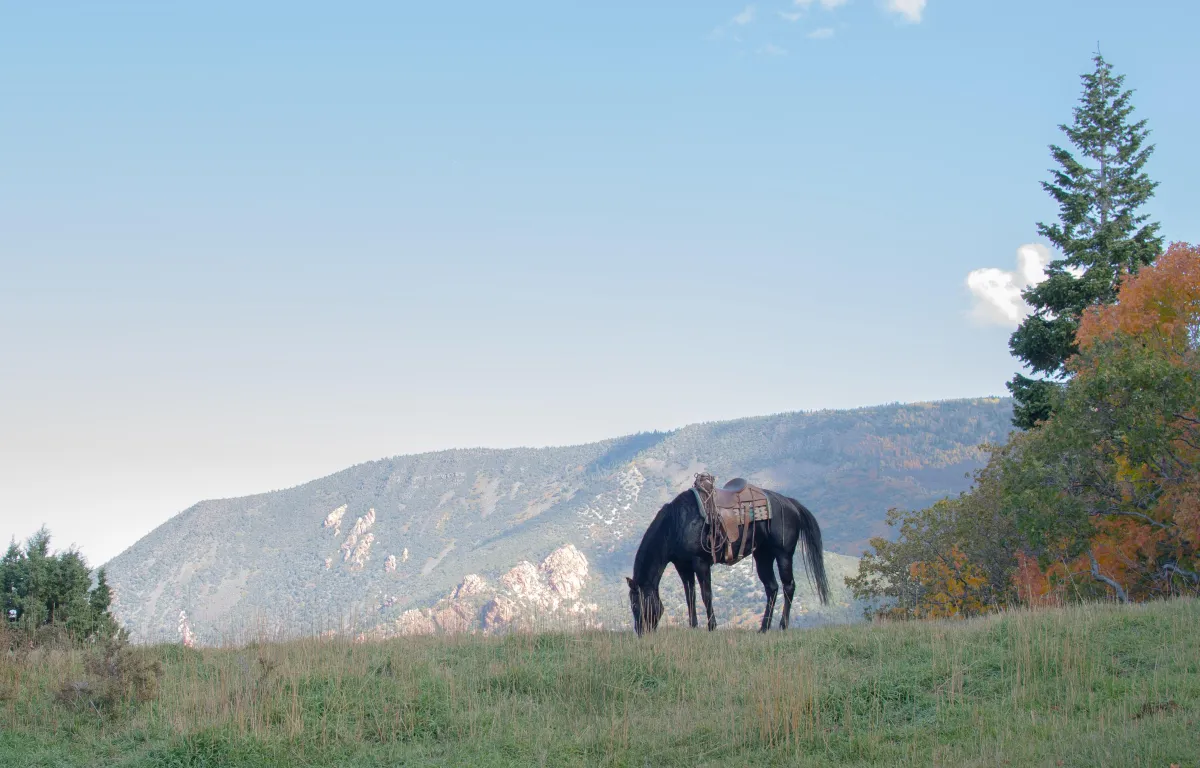
A Juniper Pinyon Woodland
A Juniper Pinyon Woodland

Because of Utah's drastic changes in elevation, Utah contains several types of countryside. From sagebrush deserts such as you find around St. George, Utah, to the juniper-pinyon woodlands that surround Cedar City, Utah, to coniferous forests on many of Utah's mountain ranges, similar in many ways to the Rocky Mountains. On many of Utah's mountain ranges, you will also find some high alpine meadows and tundra areas, such as in the Uintas in northern Utah. Rising K Ranch itself, lies within the juniper-pinyon woodlands, a few miles away from Cedar City, Utah, and our Mountain Ride takes you high up into the coniferous forests of Utah. The change of countryside along our Mountain Ride, is due to the elevation change, from 6,000 feet above sea level at Rising K Ranch, to above 9,000 feet elevation on the mountain. From some areas around Rising K Ranch, you can see all at once: areas of pure sagebrush, hills that are juniper-pinyon woodlands, and the coniferous forests on the mountain.
The juniper and pinyon trees grow well at Rising K Ranch because of paucity of water and an abundance of volcanic rock and soil. Most of the mammals and larger birds migrate, so that they are primarily at the ranch from December through May, and higher up in the mountains from June through November. As the Utah weather grows colder, the mule deer descend to the lower elevations in greater numbers, where they will find less snow and more vegetation upon which to browse. Since mule deer are the primary food supply of most of Utah's mountain lions, they often follow along with the deer. Not only do mammals migrate to the Rising K Ranch for the winter; but also such birds as bald eagles, Clark's Nutcrackers, Wild Turkey, Stellars Jays, Scrub Jays, and Robins.
Often, you will find particular sections of the forest where junipers abound with only an occasional pinyon pine, and other areas where the pinyon abound with only the occasional juniper. In other sections of the woodlands, you will often find a juniper and pinyon growing mere inches from each other, almost as if they were one tree. The pinyon pine grows pine needles which are similar to many other pine trees; but its bark is much darker, almost completely black, and its wood is incredibly hard, resembling a hardwood more than a typical pine. The pinyon pine tree is notable for its pine nuts, a favorite local food for people and animals alike. Many people will harvest the pinyon pine nuts in the fall and roast them before eating them.
The juniper has a much different type of needle than a pine tree has, with a much more scaly appearance. Junipers have a stringy bark that can even be braided into rope, and it is an aromatic hardwood, making excellent firewood. The juniper is known for its small, blue "berries" which are a favorite food source of robins and are also a key ingredient for making gin.
On a horseback ride through the juniper-pinyon woodlands, the wildlife you are most likely to see are mule deer, coyotes, foxes, squirrels, wild turkey, jackrabbits, cottontail rabbits, red-tailed hawks, ravens, other smaller birds, and many kinds of lizards and snakes. To have the best chance of seeing wildlife, it is best to begin looking right at sunrise, and keep your eyes peeled, always looking around the forest and not getting mesmerized into only staring at your horse's ears while you ride.
I hope to go on a horseback ride through Utah's wild countryside with you sometime soon, right here at Rising K Ranch!



Contact US
klaybullet77@gmail.com
(435)-590-8428

